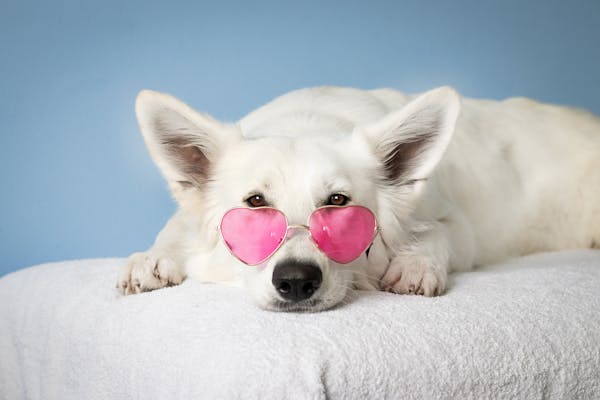Grooming your dog at home can be a rewarding experience that helps you bond with your pet and keep them clean, healthy, and happy. Regular grooming is essential for your dog’s hygiene and overall well-being. Whether you’re new to grooming or just looking for some tips, here’s a step-by-step guide to grooming your dog at home.
1. Gather the Right Tools
Before starting, make sure you have the necessary tools:
- Brushes/Combs: Depending on your dog’s coat type (short, long, curly, etc.), you’ll need the appropriate brush.
- Dog Shampoo and Conditioner: Use products specifically made for dogs to avoid irritation.
- Nail Clippers or Grinder: To keep their nails short and safe.
- Ear Cleaner and Cotton Balls: Essential for cleaning your dog’s ears gently.
- Toothbrush and Dog Toothpaste: Dental care is important for their overall health.
- Towels and a Hairdryer: For drying your dog after their bath.
- Clippers and Scissors: If you’re trimming their fur.
2. Brush Your Dog’s Coat
Start by brushing your dog to remove tangles, mats, and loose fur. The frequency and type of brush will depend on your dog’s coat type. Here’s a quick guide:
- Short-haired dogs: Use a bristle brush or rubber grooming mitt.
- Long-haired dogs: A slicker brush works best for removing tangles.
- Curly-coated dogs: Opt for a pin brush and comb to work through thick hair.
Brushing is not only a great way to remove dirt and dead fur but also stimulates blood circulation and distributes natural oils throughout their coat.
3. Check and Clean Their Ears
Ear hygiene is crucial, as dogs can easily develop infections if their ears are not cleaned regularly. Use a gentle dog ear cleaner and cotton balls (never insert anything into the ear canal). Wipe around the outer ear and check for any signs of redness, bad odor, or discharge, which could indicate an infection.
4. Trim Your Dog’s Nails
Long nails can cause discomfort and even pain for your dog, making it essential to trim them regularly. Use a pair of dog nail clippers or a grinder. If you’re new to trimming nails, be cautious and trim a little at a time to avoid cutting the quick (the blood vessel inside the nail). If you’re unsure, look for a clear line between the nail and quick, which is pink for light-colored nails.
5. Bathe Your Dog
Bathing frequency will depend on your dog’s coat type and activity level, but generally, once every 4-6 weeks is a good rule. Here’s how to bathe your dog:
- Use lukewarm water: Water that is too hot or cold can make your dog uncomfortable.
- Apply dog shampoo: Start at the neck and work your way down to the tail, avoiding the face. Massage gently to work the shampoo into the fur.
- Rinse thoroughly: Make sure to remove all shampoo to avoid skin irritation.
- Towel dry: After rinsing, towel dry your dog or use a hairdryer on a low heat setting if they tolerate it.
6. Brush Their Teeth
Good dental hygiene is important to prevent gum disease and bad breath. Use a dog-friendly toothbrush and toothpaste. If your dog isn’t used to having their teeth brushed, start slow by allowing them to taste the toothpaste and gradually introducing the brushing motion. Aim to brush at least 2-3 times a week.
7. Trim the Fur (If Necessary)
Some dog breeds require regular fur trimming, especially around the eyes, paws, and sanitary areas. Use grooming scissors for small areas or clippers if your dog has a longer coat. Be patient and careful, trimming a little at a time.
8. Check for Skin Issues
While grooming, check your dog’s skin for any abnormalities like bumps, rashes, or parasites (e.g., fleas or ticks). Early detection can prevent health problems, so be sure to consult your vet if you notice anything unusual.
9. Reward Your Dog
Grooming can be a bit stressful for some dogs, so make the experience positive by giving them treats, praise, and lots of love during and after the process. This helps them associate grooming with positive reinforcement, making it easier over time.
Bonus Tips for Home Grooming
- Start Slowly: If your dog is new to grooming, introduce them to each tool and step gradually to build their comfort level.
- Be Calm: Dogs pick up on your energy, so staying calm and patient is key to keeping them relaxed.
- Routine: Regular grooming will make the process easier as your dog becomes accustomed to it.
Final Thoughts
Grooming your dog at home is not only a great way to save money but also strengthens the bond between you and your furry friend. With the right tools and techniques, you can keep your dog looking and feeling their best without having to rely on a professional groomer.
By following these steps, you’ll be well on your way to becoming a pro at grooming your dog at home!

